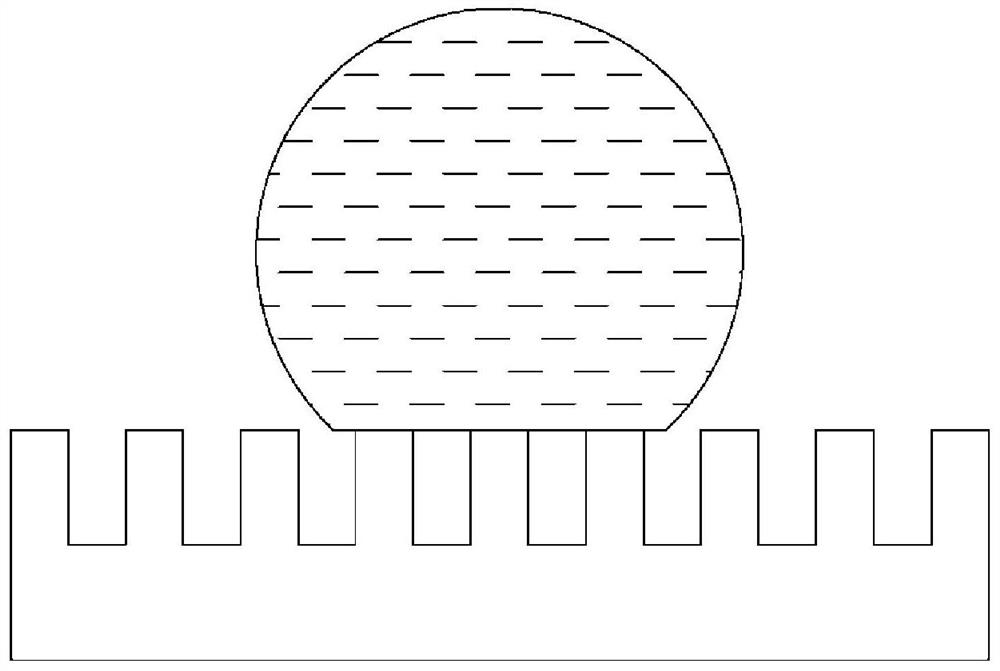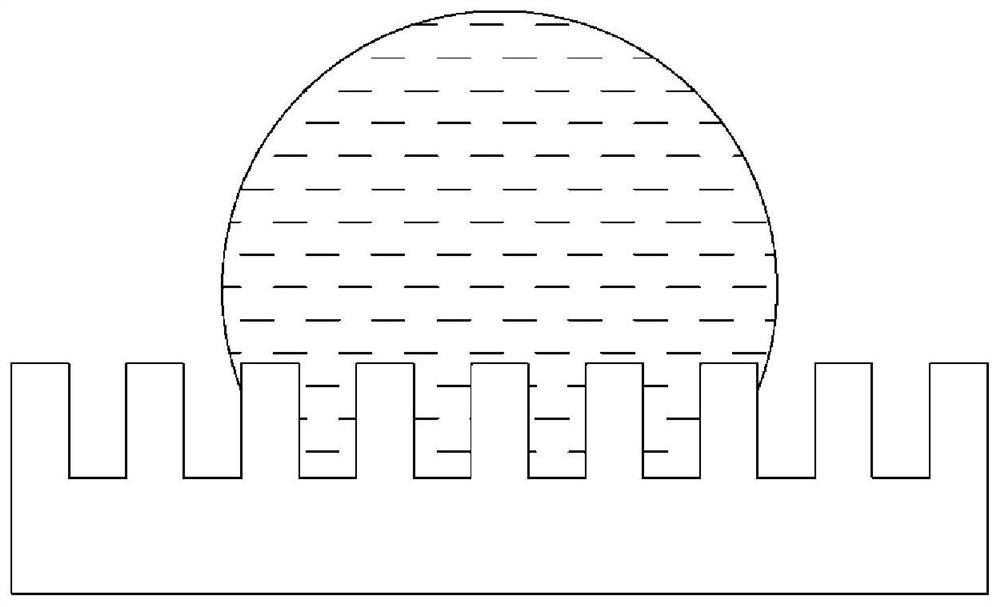A kind of composite material and its preparation method and application
A technology of composite materials and metal substrates, applied in the field of materials, can solve the problems of poor frost resistance, unsatisfactory overall performance, and unstudied material frost resistance, etc., achieve good frost resistance, suitable for large-scale production, and improve low temperature manufacturing The effect of thermal efficiency
- Summary
- Abstract
- Description
- Claims
- Application Information
AI Technical Summary
Problems solved by technology
Method used
Image
Examples
Embodiment 1
[0066] 1. Cleaning of the metal base material: select the aluminum foil fin of the heat exchanger as the metal base material, and use alcohol to fully clean the base material.
[0067] 2. Primer treatment of heat exchanger aluminum foil fins:
[0068] The acetone dispersion of polyvinylidene fluoride (10% by mass concentration) was treated by dip coating on the surface of the above-mentioned cleaned aluminum foil fins of the heat exchanger, and heated and dried at 60° C. for about 30 minutes until the coating was semi-cured.
[0069] 3. Preparation of top coat:
[0070] The acetone dispersion of hydrophobic silica nanoparticles (particle size 50-200nm) with a concentration of 1% by mass is treated by dip coating on the surface of the aluminum foil fin of the above-mentioned primer treatment heat exchanger, and the primer is heated at 150°C The first layer of resin is completely cross-linked and cured, and the physically attached hydrophobic silica nanoparticles are blown off ...
Embodiment 2
[0073] 1. Metal substrate cleaning: use alcohol to fully clean the aluminum foil fins of the heat exchanger.
[0074] 2. Primer treatment of heat exchanger aluminum foil fins:
[0075] Spray the petroleum ether dispersion of methyl silicone oil onto the surface of the above-mentioned cleaned aluminum foil fins of the heat exchanger, and heat and dry at 60°C until the coating is semi-cured.
[0076] 3. Preparation of top coat:
[0077] The ethanol dispersion of hydrophobic silica nanoparticles (particle size 40-100nm) is treated by dip coating on the aluminum foil fin surface of the above-mentioned primer treatment heat exchanger, heated at 150°C to completely cross-link and cure the primer resin, Blow off physically attached hydrophobic silica nanoparticles with an air gun.
[0078] The thickness of the bottom coating is 2-3 μm and the thickness of the top coating is 1-2 μm observed by the scanning electron microscope.
Embodiment 3
[0080] 1. Metal substrate cleaning: use alcohol to fully clean the aluminum foil fins of the heat exchanger.
[0081] 2. Primer treatment of heat exchanger aluminum foil fins:
[0082] Spray the hydrofluoroether dispersion of fluorine-containing butyl acrylate onto the surface of the cleaned aluminum foil fins of the heat exchanger, and heat and dry at 60°C until the coating is semi-cured.
[0083] 3. Preparation of top coat:
[0084] Dip-coat the dispersion of hydrophobic silica nanoparticles (particle size 100-200nm) onto the surface of the aluminum foil fins of the above-mentioned primer-treated heat exchanger, heat the primer resin at 150°C to completely cross-link and solidify, and blow it with an air gun Remove physically attached hydrophobic silica nanoparticles.
[0085] The thickness of the bottom coating is 2-3 μm and the thickness of the top coating is 1-2 μm observed by the scanning electron microscope.
PUM
| Property | Measurement | Unit |
|---|---|---|
| thickness | aaaaa | aaaaa |
| particle diameter | aaaaa | aaaaa |
| thickness | aaaaa | aaaaa |
Abstract
Description
Claims
Application Information
 Login to View More
Login to View More - R&D
- Intellectual Property
- Life Sciences
- Materials
- Tech Scout
- Unparalleled Data Quality
- Higher Quality Content
- 60% Fewer Hallucinations
Browse by: Latest US Patents, China's latest patents, Technical Efficacy Thesaurus, Application Domain, Technology Topic, Popular Technical Reports.
© 2025 PatSnap. All rights reserved.Legal|Privacy policy|Modern Slavery Act Transparency Statement|Sitemap|About US| Contact US: help@patsnap.com



